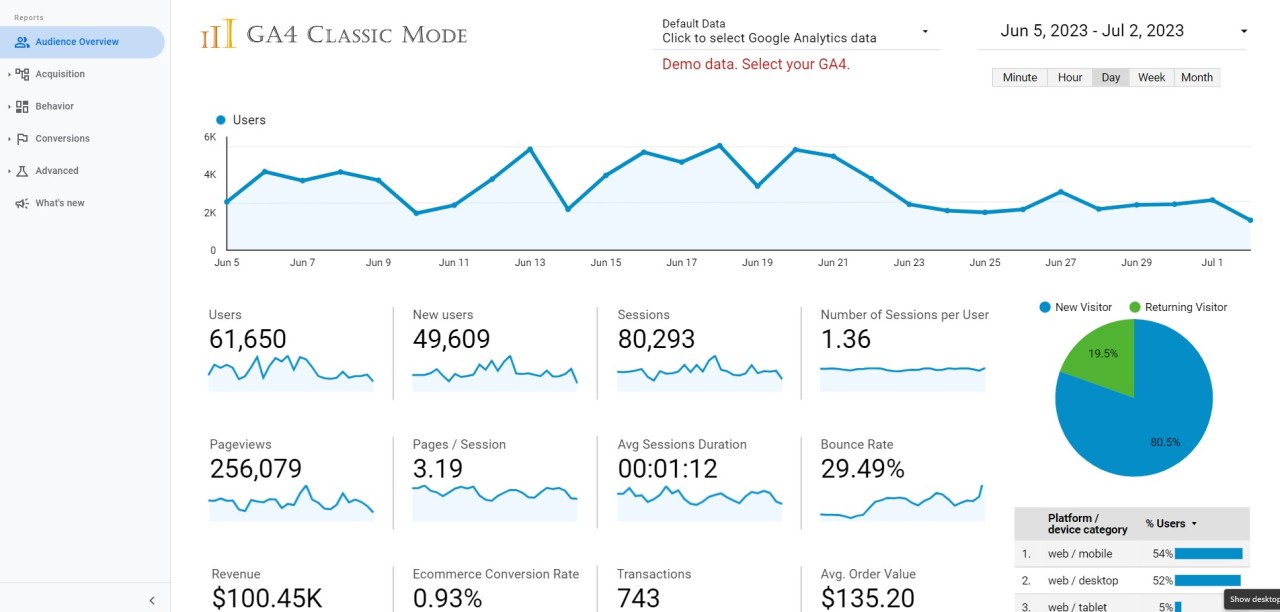In the digital age, data has become an invaluable asset for businesses seeking to understand their audience, optimize their marketing efforts, and drive growth. Among the myriad of analytics tools available, Google Analytics stands out as a powerful platform for tracking website traffic, user behavior, and key performance metrics. In this article, we’ll delve into the importance of Google Analytics, its core features, and how businesses can leverage data insights to fuel their growth strategies.
The Importance of Google Analytics
Google Analytics provides businesses with valuable insights into how users interact with their website, where traffic is coming from, and which marketing channels are driving conversions. By understanding these metrics, businesses can make informed decisions to optimize their website, improve user experience, and maximize their marketing ROI. Google Analytics offers a wealth of data-driven insights that are essential for driving business growth in today’s competitive landscape.

Core Features of Google Analytics
- Website Traffic Analysis: Google Analytics allows businesses to track various metrics related to website traffic, including total visitors, unique visitors, page views, and session duration. This data provides valuable insights into overall website performance and user engagement.
- Audience Insights: Businesses can gain a deeper understanding of their audience demographics, interests, and behaviors using Google Analytics. This information helps businesses tailor their marketing efforts to better meet the needs and preferences of their target audience.
- Acquisition Channels: Google Analytics tracks the source of website traffic, including organic search, paid search, social media, referrals, and direct traffic. By identifying which acquisition channels are driving the most traffic and conversions, businesses can allocate their marketing budget more effectively.
- Conversion Tracking: Businesses can set up conversion goals in Google Analytics to track specific actions or events on their website, such as form submissions, newsletter sign-ups, or e-commerce transactions. Conversion tracking helps businesses measure the effectiveness of their marketing campaigns and identify areas for improvement.
- Behavior Flow Analysis: Google Analytics provides a visual representation of user behavior flow, showing how users navigate through the website and where they drop off. This helps businesses identify potential bottlenecks or areas for optimization in the user journey.
- E-commerce Tracking: For businesses with an online store, Google Analytics offers robust e-commerce tracking capabilities. Businesses can track key e-commerce metrics such as revenue, average order value, and conversion rate, as well as analyze product performance and sales trends.
Leveraging Data for Business Growth
Armed with the insights provided by Google Analytics, businesses can take strategic actions to fuel their growth:
- Optimize Website Performance: Use data from Google Analytics to identify areas for improvement on your website, such as page load times, bounce rates, and user engagement. Optimize website content, navigation, and user experience to enhance overall performance and drive conversions.
- Refine Marketing Strategies: Analyze acquisition channels and campaign performance data to identify which marketing channels are most effective at driving traffic and conversions. Allocate resources to high-performing channels and refine strategies for underperforming ones to maximize ROI.
- Personalize Marketing Campaigns: Leverage audience insights to create personalized marketing campaigns tailored to the preferences and behaviors of your target audience. Deliver targeted messaging, offers, and content that resonate with different segments of your audience to drive engagement and conversions.
- Track and Measure Success: Set up conversion goals and track key performance metrics in Google Analytics to measure the success of your marketing efforts. Monitor progress over time, identify trends and patterns, and adjust strategies as needed to achieve business objectives.
- Iterate and Improve: Use data-driven insights from Google Analytics to continuously iterate and improve your marketing strategies. Test different approaches, analyze results, and optimize campaigns based on what resonates best with your audience to drive continuous growth and success.
In conclusion, Google Analytics is a powerful tool for businesses seeking to leverage data insights to fuel their growth strategies. By understanding core features such as website traffic analysis, audience insights, acquisition channels, conversion tracking, behavior flow analysis, and e-commerce tracking, businesses can make informed decisions to optimize their website, refine their marketing strategies, and drive measurable results. By leveraging data effectively, businesses can unlock the full potential of Google Analytics to achieve sustainable growth and success in today’s competitive marketplace.
 naTabanu natabanu – sve online serije na jednom mestu.
naTabanu natabanu – sve online serije na jednom mestu.



